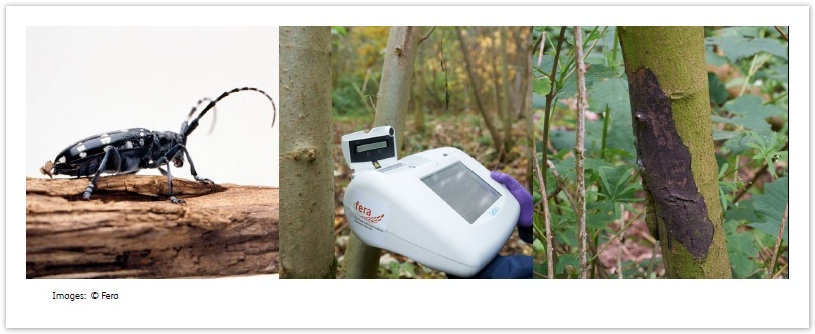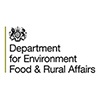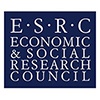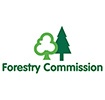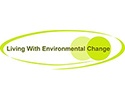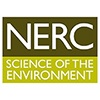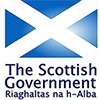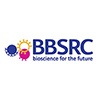
New approaches for the detection of tree health pests and pathogens
Led by Dr Rick Mumford, the Food & Environment Research Agency (Fera)
The UK’s forests, woods and trees are under threat from a growing number of pests and diseases. Many of these threats are alien which have been introduced to the UK from overseas. Some of the threats may reach the UK naturally by wind-borne spores. The alternative pathway of introduction is via human activity through trade such as moving infected plants or shipping infested timber. To improve the biosecurity of the UK and to protect plants and trees, better methods are needed for detecting pests and diseases. Early detection minimises damage by preventing an outbreak occurring or stopping it from spreading further. At present, trained inspectors are relied on to find these alien pests and pathogens, mainly through visual inspections of imported plants and products. Given the volume of inspections required, this task is difficult and the efficiency of detection is low. This project aims to provide better methods for detecting tree pests and pathogens, both moving through trade and the environment. It will look at new technologies for detecting changes in infected plants using either ‘sniffer’ technology to identify chemical changes in the air triggered by disease or imaging techniques that can detect changes beyond the range of human vision. The researchers will also look at developing new traps for capturing insects and DNA-based detection approaches to look for pathogens. This will allow the identification not only of known pathogens, but also new ones. In addition, the study will investigate using a “citizen science approach” in detection, identifying what type of end-users could be involved in the hunt for threats.
Project website http://protectingtreehealth.org.uk/
This project is a partnership between Fera, the Centre for Ecology & Hydrology, Forest Research, the James Hutton Institute, Rutherford Appleton Laboratories and the Universities of Aberdeen, Oxford, Exeter, Greenwich, Hertfordshire, St. Andrews and Worcester (project participants).
Specific objectives (edited for this web site):
1. To develop improved and cost-effective tools for the early detection, surveillance and monitoring of alien pests and pathogens of trees and other plants to improve the UK's biosecurity.
2. To exploit technical advances in fields such as genomics, bioinformatics, pest and disease detection, trapping and environmental sampling, including risk and social impact valuation to support the health and resilience of UK trees and woodlands.
3. Based on an interdisciplinary consortium bringing together natural science specialists in tree research and plant biosecurity with leading edge scientists from the physical, engineering, social and economic science research communities to develop these tools.
4. By using an innovative interdisciplinary, co-design approach and through early engagement with policy-makers and stakeholders, to ensure that the tools developed are fit-for-purpose in the real-world: that they offer a genuine costefficiency benefit, that they are deployed based on risk and that there is positive uptake of these tools by end-users.
5. To create tools that can be used in a range of inspection contexts; for use by statutory inspectors (e.g. Fera and FC plant health inspectors) and/or other stakeholders e.g. industry, NGOs or the public ('citizen inspectors') as appropriate.
6. To add to our national capabilities in tree health and leave a lasting legacy; by adding to our fundamental scientific knowledge in this area, by bringing in new expertise from beyond the traditional tree research community and by facilitating the development of a stronger UK biosecurity science community.
7. That the tools developed will enhance our tree health surveillance and monitoring capability but will also be generic in nature; having the potential for uptake into other scenarios; for example being used to aid eradication and control campaigns or as part of disease management for non-statutory pathogens.
Further Information
Recently Updated
As you and your team create content this area will fill up and display the latest updates.
